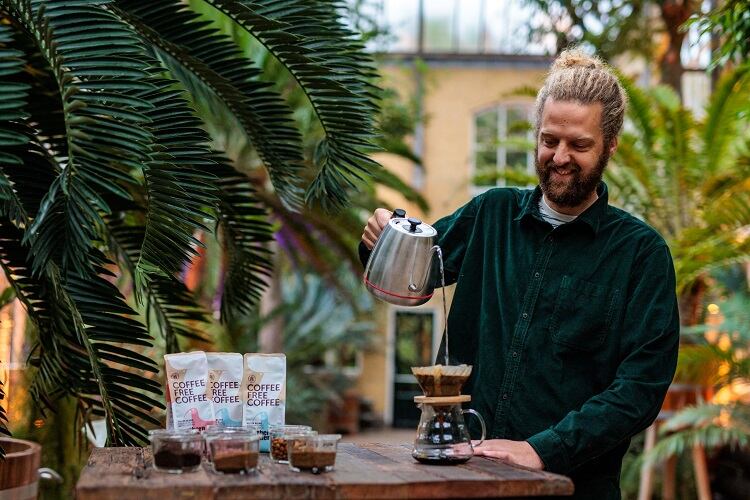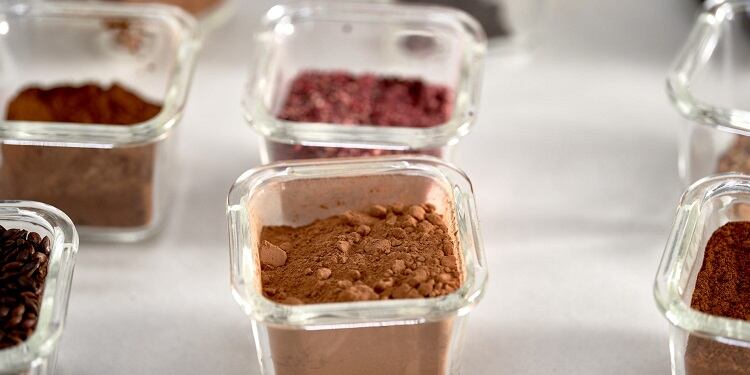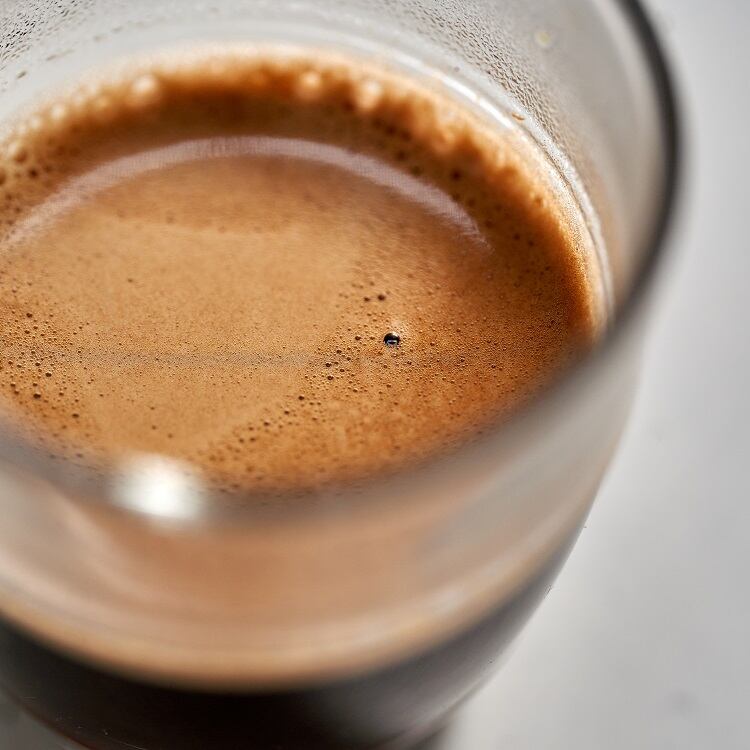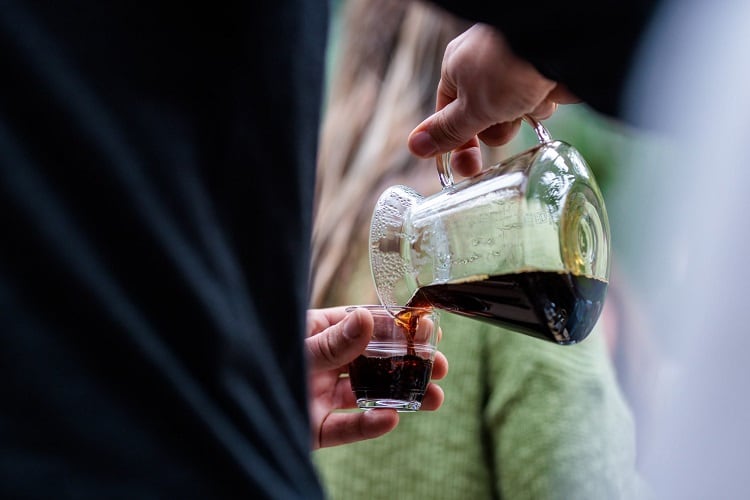In the Netherlands, entrepreneurs have spent the last two years working on a coffee alternative with a strict sourcing policy: it must not contain any ingredients grown in a tropical environment.
The result, which launched onto the market last week, is Coffee Free Coffee by Northern Wonder. According to the start-up, the product has the taste and smell of coffee, contains caffeine, and is even brewed the same way as regular coffee.
It’s all in the name, suggested Northern Wonder co-founder and CEO David Klingen: “It’s a miracle, or a ‘wonder’, that we succeeded in making such a great product with ingredients only from the ‘northern’ hemisphere.”
The sixth biggest driver of deforestation
Northern Wonder was established by four co-founders – Andreas Giel (COO), Bas Franse (CFO), Onno Franse (R&D lead), and CEO Klingen – concerned about deforestation in the coffee supply chain.
“We are not against coffee, we are only against coffee-related deforestation,” explained Klingen.
Deforestation is a global issue. Behind China, the European Union is the second largest importer of tropical deforestation and associated emissions. According to WWF, between 2005 and 2017 more than 80% of tropical deforestation was concentrated in just six commodities, including coffee.
“Coffee is now the sixth biggest driver of deforestation,” Klingen told FoodNavigator. While not as consequential as soy and palm oil, which take first and second place respectively, Northern Wonder fears coffee-associated deforestation is set to accelerate.
Firstly, Europe has long been fond of coffee, with the Dutch amongst the highest consumers in the world. According to Statista, in 2020 the average per capita coffee consumption in the Netherlands was estimated at 8.3kg.
Outside of Europe, notably in China and India, coffee consumption is also on an upwards trajectory. In China, coffee consumption is growing at an annual rate of 15%.
“The Chinese and Indians are about to drink as much coffee per capita as we do in western countries,” explained Klingen. “If they end up at the [same] level of consumption, a lot more land will be needed to grow coffee.”

The second factor is global warming. The effects of climate change mean that the most suitable regions for growing coffee arabica will decline. “Coffee production will shift,” said Klingen, “it will move higher up here where it’s cooler and expand geographically.
“These two aspects together make coffee increasingly a driver of deforestation.”
Taking an ‘alt meat approach’ to the problem
Efforts are being made to limit coffee-related deforestation. Third-party certification schemes exist for the commodity – as they do for palm oil, soy, cocoa, and others – but according to WWF, market uptake is limited and uneven, and results inconclusive.
“In some cases, certification resulted in lower forest cover loss, but there is no evidence on whether voluntary standards have wider effects on deforestation itself of certified areas,” notes the NGO.
Klingen, who before entering the world of entrepreneurship headed up sustainability at supermarket retailers, came to a similar conclusion. “All good efforts lead to only marginal changes in many of these commodities. I support good intentions, but it’s not really making a difference.”
A comparison can be made with the meat industry, the CEO suggested. “You can implement better conditions for animals or make more sustainable meat – OR you can do something radical and develop a meat alternative product.”
This is the approach Northern Wonder is taking. The start-up is working on two projects simultaneously to disrupt the conventional coffee market with non-tropical ingredients.

After two years of development, Northern Wonder is launching its first line of products on the market. Four SKUS – made up of caffeinated and decaffeinated filter blends; and caffeinated and decaffeinated capsules – make up the start-ups ‘shorter-focused R&D’.
“Similarly to alt meat companies, we will become more and more coffee-like over the years,” explained the CEO. “But it’s already so coffee-like, we thought we’d hit the market.”
Coffee-Free Coffee 1.0
To develop its first line of Coffee Not Coffee products, Northern Wonder teamed up with Wageningen University in the Netherlands to establish a theoretical approach. The goal was to identify which non-tropical ingredients contain compounds ‘crucial’ to the coffee flavour.
Once that was established, the sensory work began. “We processed the ingredients in various ways, roasting them like coffee,” recalled Klingen. Relevant indicators included bitterness and acidity. “We played with a lot of mixes in order to come as close as possible to coffee.”
The final ingredients chosen differ slightly depending on whether it is intended for filter or capsule formats. The capsule blend, for example, is made from lupin, barley, rye, fig, chickpea, chicory, carob, black currant, caffeine, and natural flavour. The roasted filter ground blend doesn’t include fig or carob.
The caffeine level is similar to normal coffee (1400mg/100g), but comes from a different source. “We have a very string rule, which states we don’t use tropical ingredients. Because conventional products that contain caffeine can only be found in the tropics, we use a synthetic caffeine source,” Klingen explained.
The crema element was developed by chance: when the Nespresso-compatible capsules are put through a machine, crema – which ‘looks like the real thing’ – appears, thanks to Northern Wonder’s selected blend of ingredients. “It turned out great,” said the CEO.
“Today, it is very coffee-like. If you add milk to our coffee, for example to make a latte or cappuccino, it is virtually impossible to taste the difference.”
As an espresso ground, however, the product is ‘not quite there yet’. Another aspect missing from the first line of Coffee Not Coffee products is what the start-up refers to as ‘room-fillingness’. Both of these hurdles will be overcome in Northern Wonder’s second R&D stream, which has yet to reach the market.
Coffee-Free Coffee 2.0
Northern Wonder describes ‘room-fillingness’ as the sensation of being ‘triggered by the smell of coffee’ when a cup is brewed in a different room or a different floor of a house.
‘Room-fillingness’ comes from volatiles, development of which is the aim of the start-up’s second R&D stream. To achieve this, Northern Wonder is working on the ‘whole bean structure’. The idea is that in developing such a structure, and pressing it, the ‘smell and aroma’ aspect will be enhanced.
“We believe that our long-term R&D will make the indistinguishable variant of coffee.”
Technologies leveraged by the patent-pending technique include fermentation and a ‘pressing technique’. When asked whether 3D printing technology is used to reconstitute the bean structure, Kinglen explained such an ‘energy intensive’ method is not required.
It will also not be deemed a novel food, although the start-up is open to exploring cellular agriculture-based methods down the line.

Mimicking the structure of coffee beans could also open up sales channels into foodservice, or anywhere where bean grinding is part of the brewing process.
“The world of foodservice is not our first target,” Klingen explained. The start-up is first launching direct-to-consumer, to trigger a feedback loop for further product development. Retail and foodservice channels, however, will likely be considered in the future.
Initially targeting the ‘green to dark green’ consumer
Northern Wonder expects its first buyers to be ‘green’ or ‘dark green’ consumers.
The ‘dark green’ profile refers to a small minority of consumers for whom ethical concerns inform their purchasing behaviour. “Imagine somebody working for Greenpeace, with electric solar panels, who wears organic cotton, and is vegetarian or vegan, but who drinks coffee every morning – the number 6 driver of deforestation.
“If such a person wants to practice what they preach, they should switch to our product.”
However, other factors could help the conventional consumer pick up Northern Wonder’s products off the shelf, the CEO suggested. The big one is price. “The cost price of our raw material could potentially enable us to sell our products cheaper then coffee.”
Of course, it depends on scale. Similarly to alternative meat products, which are made from ingredients with a theoretically lower price tag than conventional meat, scale is crucial to determining its price point.
Indeed, in some regions, plant-based meat alternatives have undercut conventional meat products.
If supply chain issues, or fungal coffee disease Hemileia vastatrix (commonly known as coffee rust), disrupt coffee supply, coffee could become very expensive, suggested Kinglen. “At which point, my co-founder of operations could be having a crazy time.”


